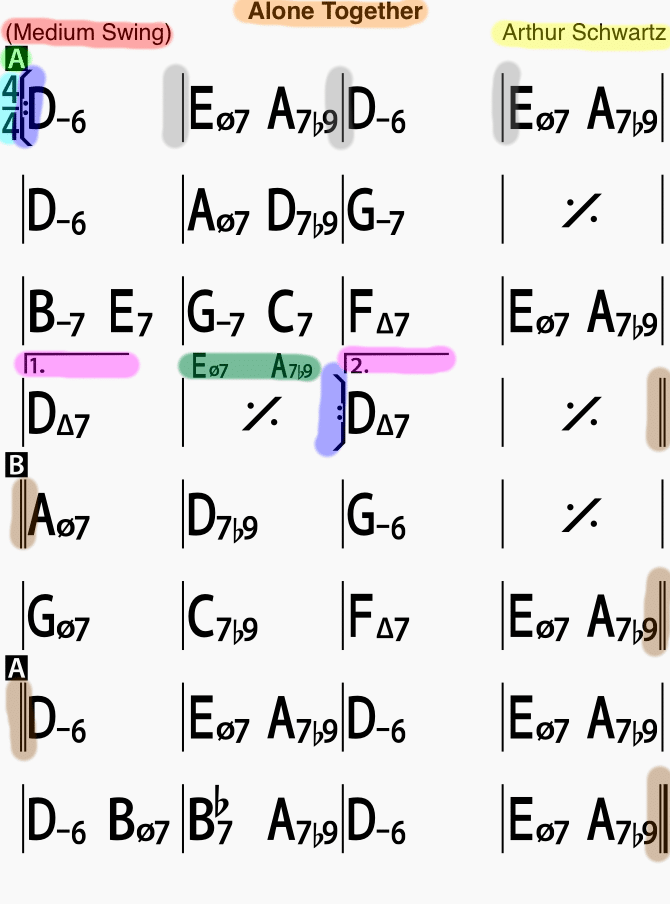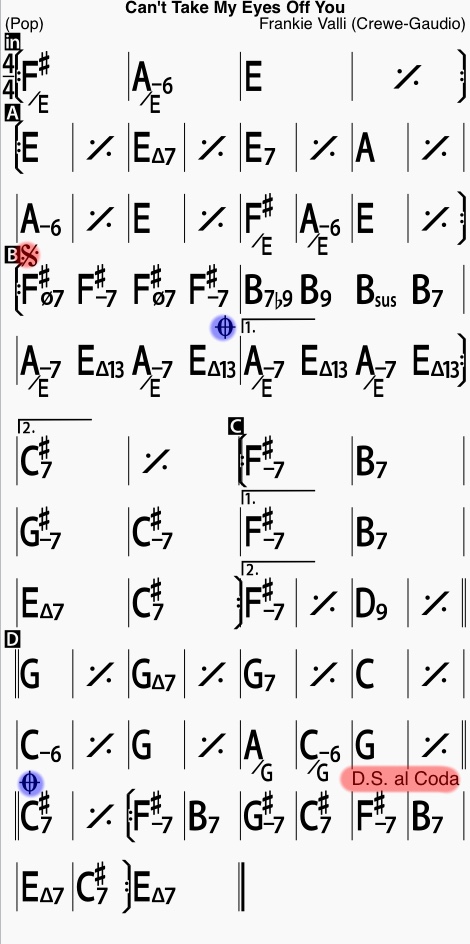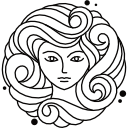Meaning of the symbols
If you don’t know much or anything at all about chord charts it can make you insecure. In that case, it’s time to lift the veil of mystery hanging over them.
Chord charts are the form of sheet music most suited for jazz, since the chord symbols are clearly visible, and there are little to no notes. Jazz musicians like to choose which notes to use for themselves.
First, we will look at a chord chart from the iRealPro app: exceptionally clear, but without melody or lyrics. Ideal for jam sessions; musicians will love you for it!

Orange is the title, yellow the composer/lyricist, red the tempo and style of the song. Green indicates the name of a section, usually capital letters (also known as upper cases; A,B,C,etc.).
Time signature
Cyan (light blue/green) is the time signature indicating how time is divided: the bottom number indicating what length of notes are used as a reference: 4 meaning a quarter note (8 would have meant an eight note, 2 a half note). The top number is how many of these notes fill up one bar.
Bar lines
Grey are the bar lines, dividing the music into equal parts of a duration specified by the time signature and the tempo. Brown are double bar lines indicating the end of a section or part. The final bar line of a composition is one thin and one bold vertical line.
Purple means ‘repeat the section between these brackets with two vertical dots’. Pink: 1. means ‘play this the first repetition of this part’; 2. means ‘the second repetition play this instead of 1.’
Symbols
In between the bar lines are the chord symbols like D-6 or Eø7 for example, as well as tilted ÷ symbols that mean ‘play the same chord or chords as the previous bar’. In dark green are alternatives chords.
Now for some disco! Seriously, this next chart is just a good example of how chaotic charts can be, but shouldn’t be.
First of all, an equal amount of bars per line, preferably four, is best, for it enables musicians to get a feel for the amount of time one bar system (the horizontal line filled with chords and bar lines) takes.
Second of all, though having all the music on one sheet is nice, as in this example where many parts are repeated, sometimes having two sheets is better, for it allows for a more spacious layout, which is simply much cleaner and thus clearer.
The parts marked in red are a symbol called ‘Signo’ (which means sign) and the text D.S. al Coda, which means back to the bar where the ‘Signo’ is located, then play through till the ‘Coda’ (which means appendix) sign, which is marked purple/blue. From there go directly to the bar where the other ‘Coda’ sign is located. You see, chord charts are like maps with chord symbols as places, bars as roads and other symbols for directions; indicating the route to take.


